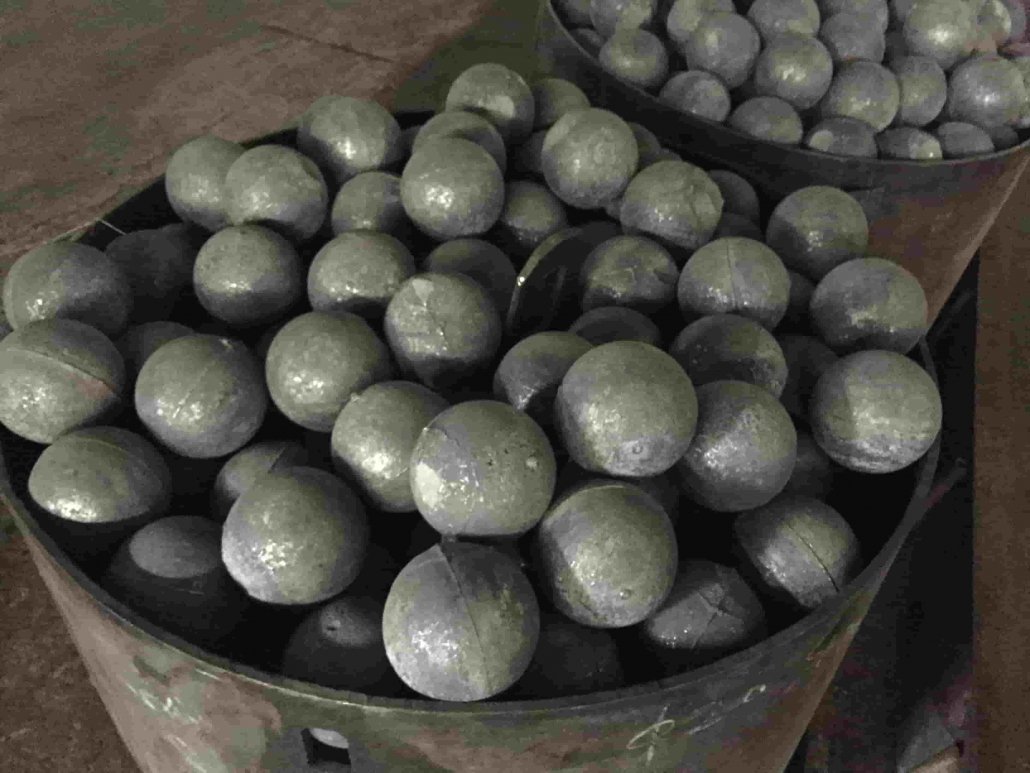Production and Application of the Austenitic High Chrome Cast Iron Grinding Ball (2)
2. Matrix structure, mechanical properties, service properties
The as-cast and austenitic matrix structure can be obtained through the reasonable design of the chemical composition, strict control of each element’s content, and rapid cooling process. The volume content of AUSTENITE is 55% ~ 70%, the amount of carbide is 20% ~ 26%.
The surface hardness of high chromium cast iron grinding ball with austenitic Matrix is 44HRC ~ 47HRC; the surface to center hardness difference is less than 3HRC. The impact toughness of the 10mm × 10mm × 55mm impact specimen taken from the cast ball is more than five j/cm2, and its value is much higher than that of quenched martensite high chromium, cast ball, and transit high chromium cast ball. Because of the high toughness of austenite structure, the grinding ball can resist or absorb the impact energy under the condition of high-stress abrasive impact wear to prevent the occurrence and expansion of the crack and spalling of the cast ball, and reduce the wear consumption.
One of the remarkable characteristics of austenitic high chromium cast ball in use is its work-hardening property. Under the condition of high impact force or friction force, the surface layer of the austenite-based cast ball in the metastable state occurs plastic deformation, which induces the transformation of austenite to Martensite in the grinding ball surface and microstructure, resulting in a strong working hardening phenomenon, the surface layer of the grinding ball is continuously hardened, and the hardness of the layer is increased sharply than before use. According to the impact friction energy, HRC (5 ~ 15) is increased by different surface hardness. Simultaneously, because the core of the grinding ball still retains all the strength and toughness of the austenite structure, it can restrain the propagation of the crack and reduce the tendency of the grinding ball breaking and spalling, and greatly improve the impact wear resistance of the alloy.
3. The production of casting grinding balls with austenitic Matrix
The production of High Chromium Cast Ball adopts 0. 5t medium frequency induction furnace smelting; the primary materials are 14 pig iron, scrap, high carbon ferrochrome, and high carbon FERROMANGANESE, etc. . The casting process was adopted, the pouring temperature was controlled at 1500 °C ~ 1550 °C, and after pouring the mould was cooled to 650 °C ~ 750 °C, the mould was air-cooled and self-annealed.
The austenitic high chromium cast ball can be applied to the diameter of Φ1. 8m ~ Φ4m Ball Mills. Not only in the dry ball mill, the use of excellent performance, and because of its austenitic structure, magnetic small, corrosion resistance, but also widely used in a variety of wet ball mill. For example, in some alumina ore Φ3. 2M × 4m wet-type raw material, in the mill, the wear of austenite high chromium ball is 290g/t ore. The wear of Martensite high chromium grinding ball is 330g/t ore. Therefore, austenitic high chromium cast ball’s service performance is better than that of quenched martensite ball.
4. Conclusion
The hard and tough high chromium cast iron grinding ball with austenitic Matrix microstructure produced by alloying treatment and permanent mold casting process has the moderate hardness and good toughness, and can better meet the needs of the ball mill; Compared with heat treatment ball, the addition amount of alloy is less, and the cost is reduced by 200 yuan ~ 400 yuan per ton, which has excellent wear resistance and economy.



